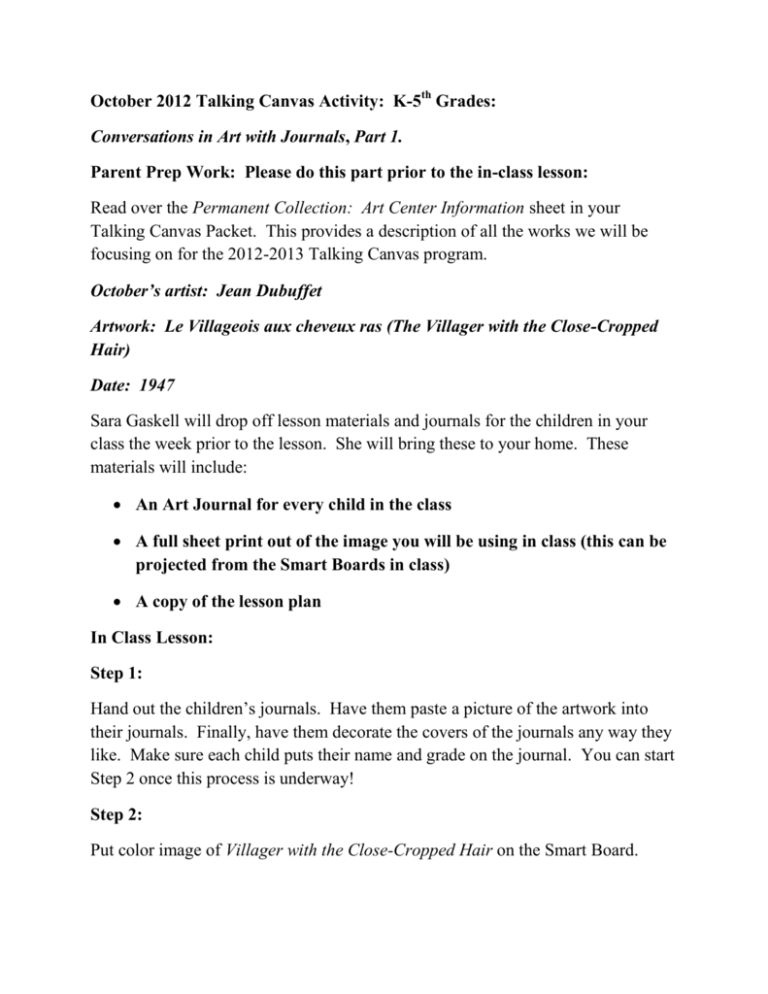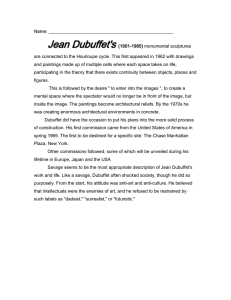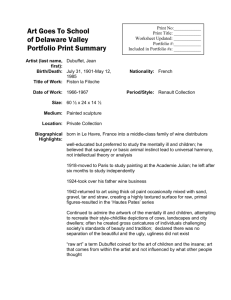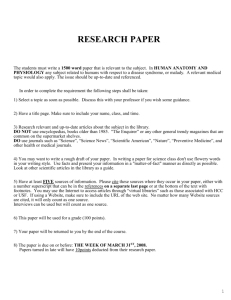October 2012 Talking Canvas Activity
advertisement

October 2012 Talking Canvas Activity: K-5th Grades: Conversations in Art with Journals, Part 1. Parent Prep Work: Please do this part prior to the in-class lesson: Read over the Permanent Collection: Art Center Information sheet in your Talking Canvas Packet. This provides a description of all the works we will be focusing on for the 2012-2013 Talking Canvas program. October’s artist: Jean Dubuffet Artwork: Le Villageois aux cheveux ras (The Villager with the Close-Cropped Hair) Date: 1947 Sara Gaskell will drop off lesson materials and journals for the children in your class the week prior to the lesson. She will bring these to your home. These materials will include: An Art Journal for every child in the class A full sheet print out of the image you will be using in class (this can be projected from the Smart Boards in class) A copy of the lesson plan In Class Lesson: Step 1: Hand out the children’s journals. Have them paste a picture of the artwork into their journals. Finally, have them decorate the covers of the journals any way they like. Make sure each child puts their name and grade on the journal. You can start Step 2 once this process is underway! Step 2: Put color image of Villager with the Close-Cropped Hair on the Smart Board. Tell the children a little bit about the artist and the piece you are looking at. You can give a brief biography of the artist, but primarily ask the children the Visual Thinking Strategies Questions from your laminated VTS card and have a short class discussion: 1. What’s going on in the picture? 2. What do you see that makes you say that? 3. What more can you find? Have the children discuss the work using this method. Step 3: Using the image of The Villager with Close-Cropped Hair as the focus, have the children create their own self-portrait in a similar style to Dubuffet’s. Explain to them that Dubuffet collected art of both children and the insane as models for his own work. Known as “Art Brut” or “Crude Art”, this kind of art appealed to Dubuffet for its intrinsic simplicity and lack of artifice. He thought of children’s art especially as a pure type of art. Wrap-up Activity: Let as many of the children as possible show the class their portrait and explain how they drew them. End of class: Collect all journals and put them into the colored basket that will be in the room waiting for Talking Canvas Journals. Return them to the Front Office as you exit the building, please. Post-activity: teachers can post the self-portraits up or send them home in the home folders when they are finished.







